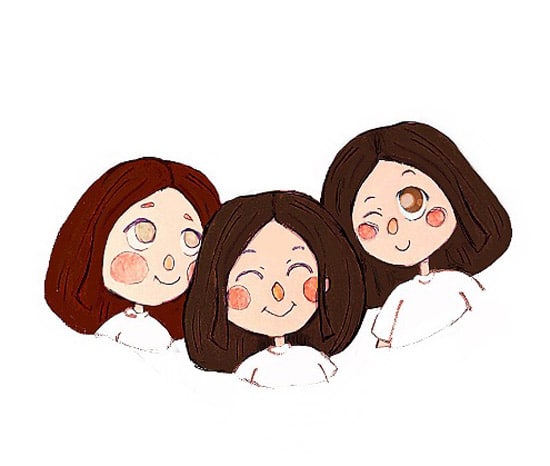Eco-Friendly Hair Tie is a company founded by 3 cousins – Fern, Ploy and Clara.
Fern Phataraprasit’s professional background is from Northeastern University and UCL.
Ploy Phataraprasit’s professional background is from MI. A unique degree program combining contemporary music performance with training in such traditional music disciplines as music arranging, history and theory.
Clara Phataraprasit’s professional background is from Unity College (100% Environmental-Based University). Accredited Institution by New England Commission of Higher Education (NECHE). The program provides practical expertise and professional skills to students interested in a profession that advances the sustainable business movement.
Eco-Friendly Hair Tie: Eco-Friendly Product Meeting the Ideals of Cradle to Cradle Design #cradletocradle
Eco-Friendly Hair Ties are 100% Biodegradable, Eco-Friendly, Formaldehyde-Free, Good Elasticity, Non-Toxic and Recyclable. Our products adhere to the Cradle To Cradle Design philosophy. Our production generates over 30 colors, 50 baht to 100 baht per each piece. According to Bibsworld, TPU is a cutting-edge material that is much more eco-friendly than alternatives such as PVC, it is biodegradable and reusable after 3 to 5 years.
According to Springer, Cradle To Cradle is a closed-loop system for developing and producing items in such a manner that they may be recycled (up-cycled) at the end of their useful lives. It is comparable to nature’s cycle, in which all materials are recycled or returned to the ground. It must be completely biodegradable, non-toxic and non-hazardous. The components are either consumed by another animal, earth, product or converted to fuel. Cradle To Cradle is comparable to sustainability in that nothing is thrown away and everything is used.

 Eco-Friendly Hair Tie Product’s Life Cycle
Eco-Friendly Hair Tie Product’s Life Cycle
1) Supply Chain Management of Raw Material
According to Omenexus, TPU is formed when a particular polyaddition reaction between a diisocyanate and one or more diols occurs. The three primary raw ingredients needed to manufacture a TPU are as follows:
- A chain extender or short-chain diol
- A diisocyanate
- A polyol or long-chain diol
2) Operations Management Decisions Related to Manufacturing
Our store is located in Thailand. We aim to support Asia’s growth and socioeconomic advancement in a creative and progressive manner. It allows us to support workers in the ASEAN nation while valuing worker safety and also assisting customers. According to Medical Design Brief, because of its excellent performance qualities, thermoplastic polyurethane (TPU) is widely recognized and specified in the medical sector for sophisticated medical and healthcare goods. TPU is a popular choice for medical applications because of its superior mechanical qualities, durability, and resistance to oils and chemicals. TPU is an ecologically acceptable alternative to PVC that does not sacrifice flexibility since it does not include plasticizers. Either TPU varieties also fulfill NSF Standard 61, FDA 21 CFR for some food contact applications, and USP Class VI classification standards. According to Providien Medical, TPU is one of the most adaptable plastic materials for medical devices presently accessible. TPUs are utilized in a number of medical applications, including as curtains, sterile barriers, and surgical instruments. Medical-grade thermoplastics (TPUs) are high-performance polymers that fall in between rubber and hard thermoplastics in terms of properties. TPU’s and flexible forming are excellent options for a wide range of applications. The unique features and capabilities of these materials may be used to address many of the most difficult design and performance issues that devices and components face.
3) Use
Skin-Safe. According to Medical Device, TPU’s have a diverse set of features that make them suited for a broad variety of applications. These include effectively substituting more traditional rubbers or PVC in medical applications that need plasticisers to become flexible. TPU healthcare grades also do not include rubber accelerators or plasticisers, which may cause skin irritation or dermatitis. While a variety of thermoplastic elastomers (TPEs) may be suitable for the job, TPU is a more durable and high-quality option. It is far stronger than most other materials, resulting in increased durability while using less material. It outperforms rivals in terms of flexibility, tear-resistance, and abrasion resistance.
4) Disposal
According to Research Gate, because of their positive environmental effect, bio-based products should be required in a wide range of applications. The advantage of these materials is that they have a lower carbon footprint and have a positive impact on the life cycle assessment (LCA) of plastic products; as a result, the polymer industry is paying close attention to the development of biobased thermoplastic polyurethane (bio-TPU) from renewable resources. Furthermore, contemporary biotechnology research is focused on the creation of a new form generated from plant-based biomass. As a consequence, the focus of this research is on current bio-TPU formulation advancements. Factors influencing TPU formulation are discussed in light of its potential applications in a variety of fields. TPU biodegradation is also covered, as well as many variables that accelerate up biodegradation.
5) Material Recovery and Reuse
According to Tractus 3D, Printed goods made of TPU are durable and can withstand high temperatures. TPU fiber is abrasion-resistant, chemical-resistant and impact-resistant. The material is versatile and can be found in a wide range of industries. Heated bed: up to 60 °C.
Can you analyse the product’s life cycle impacts and how it’s impacts would differ from a similar product that isn’t designed with Cradle to Cradle concepts in mind? What parts of the lifecycle are different? How does implementation of a Cradle to Cradle design open the product up to new sustainable opportunities and markets?
Life cycle: 6 months – 1 year. TPU performance can be influenced by storage conditions (temperature and moisture) over time. It is abrasion resistant, allowing it to preserve its look and physical integrity in the face of scratches and scrapes. TPU has a high-strength composition, making it one of the harder materials on the market. This implies that, unlike silicone, it is very difficult to break under normal conditions. To shatter TPU, it would need much more force than most goods face on a daily basis. It can endure collisions and is chemically resistant thanks to its abrasion resistance.
According to the International Union for Conservation of Nature (IUCN), at least 8 million tons of plastic wind up in our seas each year, accounting for 80% of all marine trash from surface waters to deep-sea sediments. Plastic trash ingests or entangles marine creatures. It would be different if the product had not been built with Cradle to Cradle principles in mind. Using the improper hair tie may cause hair to get damaged. Our spiral form of the Eco-Friendly Hair Tie ensures that it does not irritate the scalp and is long-lasting. It’s not like regular plastic hair ties, which may end up in the ocean. The life cycles that are different are how Eco-Friendly Hair Tie biodegrades in 3-5 years vs. 450 years for plastic.
Implementing a Cradle To Cradle design can bring up new sustainable prospects and markets for the product. According to EPA.GOV, the overall production of municipal solid waste (MSW) in 2018 was 292.4 million tons. It has the potential to open up a lot of doors in the market. There are more environmentally friendly items on the market now than there were ten years ago, thanks to technological advancements. It contributes to the circular economy. As a result, there are several advantages to utilizing eco-friendly items that may be reused, reduced, and recycled on a daily basis.
You can follow Eco-Friendly Hair Tie on Instagram @ecofriendlyhairtie.




 Eco-Friendly Hair Tie Product’s Life Cycle
Eco-Friendly Hair Tie Product’s Life Cycle






